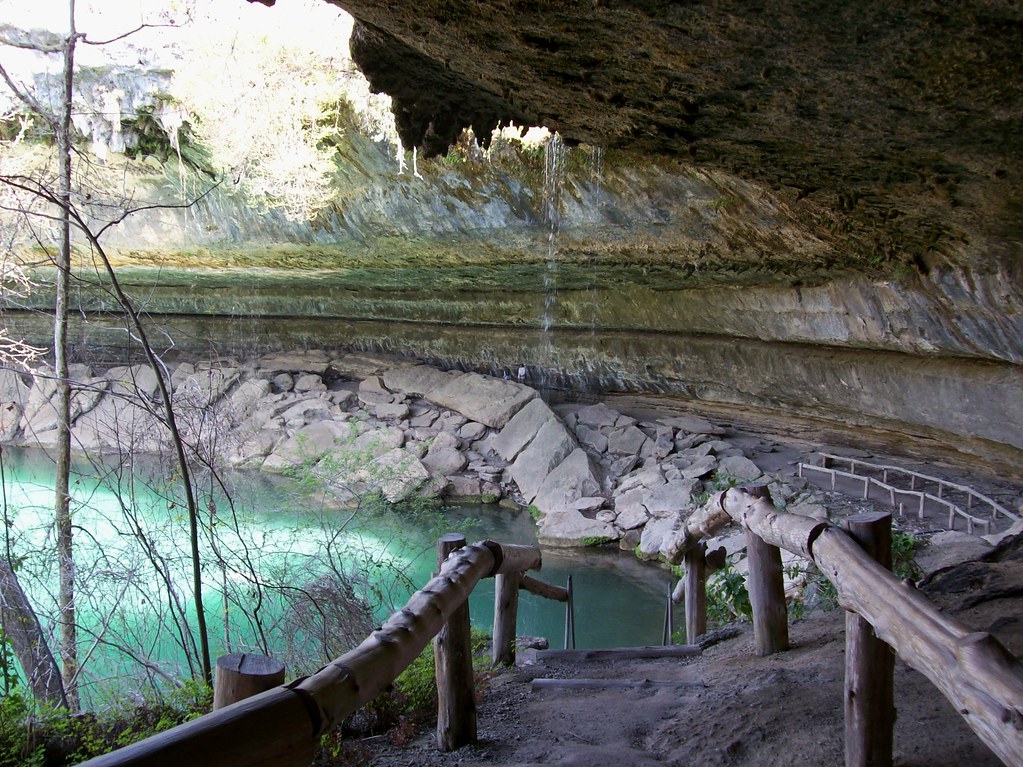Jiuzhaigou literally means nine-village-valley. It's a valley with nine villages. It's also a popular tourist destination, on UNESCO's World Heritage List. Jiuzhai Valley is most renowned for its stunning natural scenery of colorful lakes, mature forests, and spectacular waterfalls. The beautiful scenery attracts many photographers.
- Chinese: 九寨沟 (jiǔ zhài gōu, 'nine villages valley')
- Location: Aba Tibetan and Qiang Autonomous Prefecture, about 490 km north of Chengdu city
- Must-see areas: Shuzheng Valley, Rize Valley, Zechawa Valley
- Time needed: 2-3 days
Best Time to Visit — Fall

Jiuzhai Valley's scenery in fall
Fall has the best scenery in Jiuzhai Valley, with golden foliage. The fall is from September to October. "Golden" can best describe the autumnal park, when fallen leaves render the world completely golden-yellow.
The fall is a peak season for tourism, so hotels, flights, and English-speaking guides may be difficult to arrange. If you are interested in travelling to Jiuzhai Valley during September or October, we recommend you book one or two months in advance.
The park's scenery is stunning and breath-taking all year round, worth appreciating in other seasons as well.
- Green in spring: when mountains are capped with verdant trees and lakes are peaceful and quiet.
- Fantastic in summer: to stroll under the pure blue sky, passing colorful oceans of flowers.
- Snow-capped in winter: a fairy-tale heaven, with beauty that can hardly be described in words.
Park Highlights
The park has 114 lakes or pools and 5 major waterfalls. It may take you more than 3 days to explore everything. We summarize here the main highlights for you.
Shuzheng Valley is a key part of Jiuzhai which you shouldn't miss. Nearly half of the park's lakes and waterfalls are in Shuzheng, including Double-Dragon Lake, Bonsai Beach, Reed Lake, Sparkling Lake, Shuzheng Lakes, Shuzheng Waterfall, Tiger Lake, Rhinoceros Lake, and Nuorilang Waterfall.
Shuzheng Waterfall
Shuzheng Valley — See Most of the Lakes and Waterfalls
Shuzheng Waterfall is the most representative and important attraction in Shuzheng Valley. It's 62 meters wide and 15 meters high, and is the first waterfall after the river enters the valley. The lakes upstream among the shoals and stepping stones make the waterfall more magnificent.
Shuzheng Lakes
Shuzheng Lakes includes 19 lakes of different sizes, featuring different colors, and looking like terraced fields.
Nuorilang Waterfall
Praised as the most beautiful waterfall in Jiuzhai Valley, Nuorilang is also the widest (300 meters). It is at the center of Shuzheng Valley, and regarded as symbolic of Jiuzhai. It is more fabulous in the morning sunshine, especially if attended by a rainbow in the sky. In winter it's a frozen feast for the eyes, appearing as if it's hanging on the rocks.
Rize Valley — Explore the Habitat of the Giant Panda
Rize Valley is the elite part of the park. It offers an astonishing diversity of spectacular landscapes. Its main attractions include virgin forest, Strawberry Lake, Swan Lake, Panda Lake, Five Flowers Lake, Arrow Bamboo Lake, Pearl Beach Waterfall, and Mirror Lake.
Panda Lake
Giant pandas in Jiuzhai Valley used to love living near Panda Lake. They came here to drink, have fun, and look for food. Fish can be seen in this clear lake, even some rare species.
Five Flowers Lake
Multicolored and famous Five Flowers Lake is named after the flamboyant algae in the water. It looks magical and marvelous. It's actually said to have magical powers, so that the plants watered by the lake grow with particular vigor. And they do!
Arrow Bamboo Lake
Scores of tall bamboo canes, the favorite food of the giant pandas that used to stroll around Panda Lake, grow around Arrow Bamboo Lake. Reflections of bamboo and the surrounding mountains in the water create a wonderful sight!
The lake flows through the forest, and divides into many small branches, finally ending at Arrow Bamboo Waterfall. In 2001, the famous movie Hero, directed by Zhang Yimou, was shot amongst the charming scenery here.
Pearl Beach Waterfall
Pearl Beach is different from the other lakes in Jiuzhai Valley. It's a wide sandy beach with a bridge over it. Torrential waters from the lakes run under the bridge and crash into some rocks, causing waves to break on the beach. After another 200 meters rapids rush down over a steep cliff. Pearl Waterfall is massive and stirring, well worth photographing.
Zechawa Valley — See the Largest Lake
Zechawa Valley is about 18 km long, at the highest altitude in the park. The scenery here is just as attractive as elsewhere in Jiuzhai.
Long Lake
Long Lake is the largest lake in the park. It is dark blue, at the end of Zechawa Valley, facing a giant snow mountain and circled by cedars. The surrounding mountains are snow-capped for much of the year. Surveyed from afar, Long Lake looks like a large piece of extraordinary jade nestled among the mountains.
Seasonal Lakes
Upper Seasonal Lake, Middle Seasonal Lake, and Lower Seasonal Lake are closely connected. Upper Seasonal Lake is surrounded by cliffs. In fall, the waters in the lakes are blue, due to the ample leaves; in spring and winter they are green. In summer, the lakes dry up, and you can see some grass growing on the lake beds among lots of small rocks.
Five-Colored Lake
Five-Colored Lake may be the smallest lake in Jiuzhaigou, but it can still amaze you with its spectacular and fancy colors. When the sun comes out, the lake is even more fabulous and bright, rippling and shining.
See the Best of Jiuzhai Valley with China Highlights
Jiuzhai Valley is a fairyland on earth. But transportation difficulties and exorbitant prices may pose problems when you are planning a Jiuzhai Valley tour. We at China Highlights respectfully recommend the following popular tours for your consideration.




